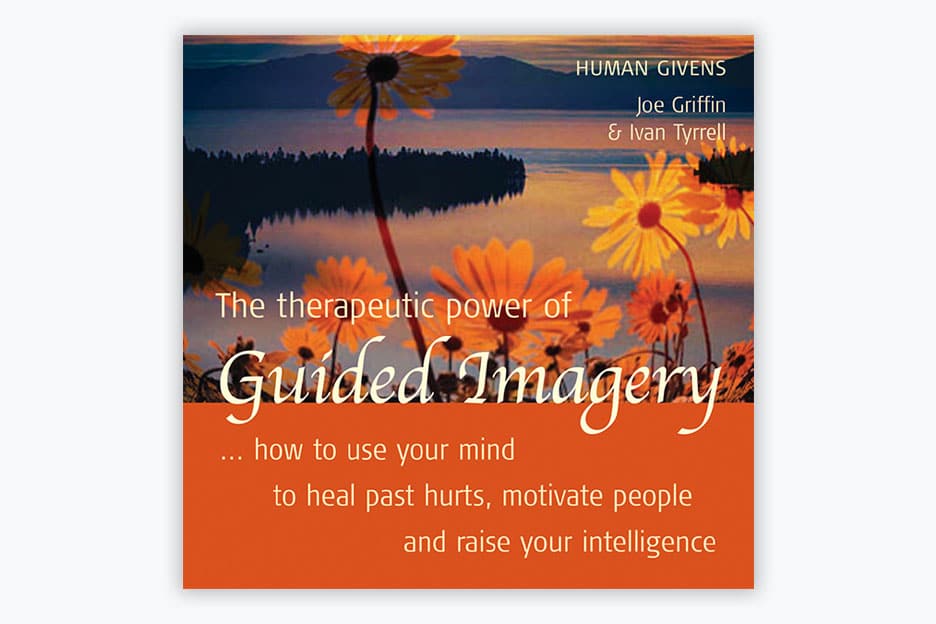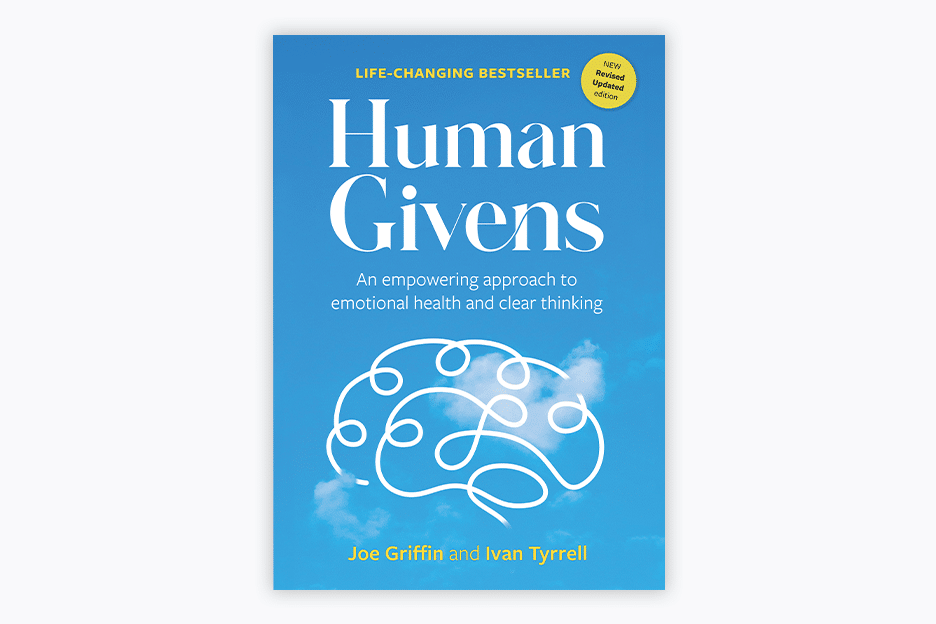Under-nourished: the key to working with restrictive eating

Russell McKenzie worked for over 20 years as a builder before he and his partner Tanya Lee qualified as human givens practitioners in 2016. They now run a successful private practice from their home in Leigh on Sea.
Russell McKenzie describes how he quickly gets to the nub of the problem with bulimic and starve/binge clients.
Mandy had struggled since her early teenage years with concerns about how she looked and what she weighed. By the time she was 16, she was restricting her food intake and, by the age of 20, had embarked on fasting diets. But she couldn’t keep them up and flipped into bingeing and vomiting. Now aged 26, she was thoroughly fed up with herself.
Mandy was the first person I saw for a restrictive eating disorder and, as a result of our successful work, she mentioned me on the eating disorders discussion forum in which she took part. Consequently, others struggling to deal with restrictive eating also started to seek out my help.
I now recognise several patterns in the behaviour of these young women who have bulimia and starve/binge syndromes. (So far, it is only women who have been consulting me.) As might be expected, they spend a lot of time worrying about their appearance and trying to starve themselves and then, because they can’t maintain it, end up bingeing and vomiting. Sometimes they come to see me in their ‘anorexic’ phase and sometimes when they are bingeing and purging. Each stage can last weeks or months, or even years, and it all depends on how out of control they are feeling. When their emotional needs are more compromised, they will take their restriction or bulimia to extremes. As with any addiction, if the needs remain poorly met, they just swap one behaviour for the other.
Mandy was made redundant from her job as a personal trainer at a gym just after the first lockdown. That is another pattern I have noticed. A number of these clients are fitness coaches or personal trainers, drawn to the career because of their obsession with their physical appearance. They may justify their purging habit and their routine over-exercising (sometimes five hours a day of cardio) by the professional need to keep looking toned and in tip-top physical condition. So their unhappiness is compounded by their guilt about living a lie and they are terrified of being judged, even by me.
Extreme over-exercising is also a feature for those who aren’t fitness coaches, especially to compensate for eating and not being sick (or not being sick enough) and is, of course, impossible to keep up without approaching emotional – and physical – collapse.
In tears, Mandy told me how she spent her days in her flat with nothing to do but eat or think about eating. She lived with her boyfriend, but he was lucky enough still to have a job and worked long hours and mixed shifts as a hospital porter.
I asked her to take her mind back to the last time she had binged, asking exactly what she had eaten and when she had made herself sick. “Close your eyes. Really try to get back in touch with how you were feeling.” When she indicated that she could connect with the physical sensations, I asked where in her body she felt them. She patted her chest, in the area of her heart.
“What emotion is behind those feelings?” I then asked. “Take your time.”
“It feels – it feels like loneliness,” she said tentatively.
HG practitioners will be familiar with the affect bridge technique, which I went on to try here. By asking her to stay focused on that feeling of loneliness and let her see where it naturally took her, I was hoping she might be taken back to some particular experience in the past when loneliness and eating became connected. Nothing happened for a while and then she made a throwaway remark that suddenly took us back to when she was 11. She had a powerful memory of being at home with her father, feeling lonely. (Her mother had died a year before and, whether it was through grief or was just the way he was, her father rarely hugged or showed interest in Mandy.)
Then Mandy’s face lit up. “What is happening?” I asked.
“My friend has come round and she has brought a cake that her mum has baked for us. We are sitting in the kitchen, eating it and laughing. For that little while, I felt really happy!” she said.
“What is making you happy?”
She dabbed her eyes. “I’m getting attention!”
She had learned that she could (briefly) satisfy the loneliness and yearning for attention by eating the sweet foods her friend brought. Now, whenever she felt lonely, she ate. Mandy recognised the connection for the first time. She had talked to me of her “emotional eating” but had never tracked it back to anything specific. “I haven’t thought of that 11-year-old girl in the kitchen with her friend for years!” she said.
I asked her if that was still the way she wanted to satisfy her need for attention when she felt lonely or at a loose end now. “No, absolutely not!” she asserted.
In guided imagery, I took her to the lovely place in the mountains that she had described when I asked where, in her imagination, she would like to go to relax, and asked if she could get a sense in her body of subverting that attention need with food, and give it a colour, a weight and a shape. She nodded. It was a heavy black disc. “Can you visualise or get a sense of taking it out of your body and holding it in your hands?” Yes, she told me, she was doing that now – and I could see her hands in her lap drop a little as if to support the heavy shape.
Over the mountains
I said to her, “This is entirely in your hands now. Do you need it anymore?”
“No.”
“Are you willing to get rid of it?”
“Absolutely.”
“Then please ask your unconscious mind what it needs to do right now in this very moment to be free of this.”
She said, “I’m just going to throw it!”
I asked if her throwing arm was any good – “good enough to throw it so far away that it is never going to come back?”
She smiled and said triumphantly, “Yes!” So I invited her to throw it away and she told me after that she had hurled it “over the mountains”.
While she was still in trance, I reminded her of what we had earlier discussed about better ways she could fill the void that loneliness leaves, as food would never fill it up. Lockdown was ending, so she was looking forward to seeing her friends and family. However, we also needed to establish what she could do on her own – and she told me of her love of drawing as a child, and how she would like to start exploring that as a hobby. In trance, I got her to imagine coupling times when she felt lonely and restless with getting out her drawing materials and relishing becoming absorbed in developing her skills, listening to music at the same time (which she liked to do).
I saw Mandy just once more. She was working again as a fitness instructor and felt good that she was now eating healthily without obsessing about it. However, because her appearance was important to her professionally, she liked to keep a check on her calorie intake. In a week or so, her boyfriend was taking her away for a weekend and she was concerned about eating out in restaurants without being able to keep a calorie check. In guided imagery, I reminded her that she just needed to listen to her body, as it already knew what to do to stay at a healthy weight, and we rehearsed her acting naturally, enjoying her meals out and her time away.
After building rapport and information gathering with my eating disorder clients, I tend to go straight to the affect bridge technique. I have never yet had one who failed to retrieve the emotional experience that started them on the road of chaotic eating behaviour, although sometimes it can take a while. One young woman arrived looking so suffused with unhappiness that it was palpable. She had been on a rollercoaster of bingeing and restricting, month after month for years on end, as well as over-exercising. She had had enough and was totally frustrated and miserable.
I couldn’t get an affect bridge with the sadness. She happened to be my last client of the day, so I said, “I’ve got all the rest of the afternoon, and your unconscious knows exactly where all this started. Don’t think about anything, because that will take us down the wrong road. I want you just to feel the emotion behind that sadness. Just focus on your breath and let your unconscious mind wander off. We can be here till 7pm, if necessary.” I sat silently observing her for at least 10 minutes before she suddenly said, “I’ve got it!” It turned out to be fear, related to loss, which we were able to put back in the past, where it belonged. The next time I saw her, there was a sparkle in her eyes and all the sadness had lifted.
Jodie, 33, had restricted her eating for years, yo-yoing between ‘successfully’ avoiding eating more than an apple, a yoghurt and a few pieces of lettuce a day, and then bingeing uncontrollably for a week.
Trapped
When I asked her to try to re-experience the feeling she got when she was struggling to restrict her eating, she said that her heart started to race. She identified the feeling as stress, because she was anxious about food all the time. However, when I got her to home in on the stress and feel what was behind it, she recognised a mix of feelings – disappointment, fear and confusion. But this didn’t lead us anywhere specific. She told me that she struggled with her food restriction most when she was travelling away for work, stuck in a hotel on her own. It felt a bit like being in a prison and she felt trapped. She was also in an unsatisfying marriage. So we did an affect bridge with the trapped feeling and very quickly it led to a memory of herself as a three-year-old, standing in the doorway of a flat, bracing herself against the door jambs, refusing to move and having a meltdown.
It emerged that her parents had recently separated. Her dad had collected her for a visit and taken her to the flat he was renting. Now her mum had arrived to take her back home and she didn’t want to leave her dad. She wanted them all to go home together. Both of her parents were getting frustrated with her, and ignoring each other. She felt totally confused about what was going on, feeling trapped, out of control, disappointed, fearful. Every time she had that trapped feeling (a fairly regular response to her unsatisfying marriage), she unconsciously pattern matched to that three-year-old girl, desperate to feel some control. When she was young, she would do this by throwing tantrums. Then, as she became a teenager, one of the easiest ways to get a sense of control in a confusing world was to control what she ate.
In guided imagery, I led her to float back from her current age of 33 to her three-year-old self, and sense what that little girl was feeling and what she needed, right then. Jodie identified that her three-year-old self needed reassurance and a hug from her parents. I asked her to bring her mum and dad into the scenario and give her that much-needed hug and reassurance. Then, when she felt comfortable, I got her to come back to her adult self. “You have had 30 more years of life experience than little Jodie. What does she need to hear from you right now, to help her?”
I invite clients to do this in whatever way feels right to them. However, if I don’t think they have reframed the scenario sufficiently, I might come in with some suggestions. In this case, I said, “Jodie, when your mum and dad didn’t comfort you and make you feel safe, it wasn’t because they didn’t care. They loved you very much, and they must have hated the fact that you were so upset and they didn’t know how to comfort you. Because of their own estrangement from each other, they couldn’t work together to comfort you. It was not your fault, in any way.”
I then guided her to visualise having a healthy lifestyle, and identify what that looked like. Part of that included addressing the problems in her relationship.
Sneaking food
Another client, Helena, had got into the habit, when staying with her boyfriend, of sneaking down to the kitchen and eating food from his fridge, all the while terrified that he would wake, come to find her and be disgusted by her gluttonous behaviour. When we tracked this back, it appeared to be akin to a molar memory, whereby a pleasurable ‘forbidden’ activity gets thwarted by something or someone and the resultant humiliation or fear leads the pleasure to be suppressed. In such cases, the suppressed pleasurable activity becomes a compulsion, which surfaces whenever it is safe.
When we focused in on the experience of wolfing down food that wasn’t hers while terrified of discovery, she remembered an occasion from childhood. Her parents had not had much money and her mother had gone without some essentials in order to buy a biscuit assortment in a decorative box to bring out at the birthday tea she was holding the next day for her sister. Helena had sneaked into the living room at night, opened the box and eaten three of the biscuits, then moved the rest around to hide what she had done. She was absolutely terrified of being caught but also felt excited by the risk – and felt bad about that, too.
She was now repeatedly replaying this event – and paying the price by being out of control of her eating. I carried out the rewind technique with her, to remove both the fear and the excitement associated with it, because I wanted to take the pleasure out of the secret eating. I also got her to forgive herself for her desperate desire, as a little girl, for an unaccustomed treat. The habit vanished.
Looking in the mirror
Very often the affect bridge takes us back to teenage years, to bullying or cruel comments made about size, in person or on social media, at a stressful time in growing up. I often ask clients to visualise looking at themselves in a full-length mirror, to try to get them in touch with their discomfort at what they see – and follow that back to see where it goes. Loneliness also features a lot, in the form of coming home from school to an empty house, when parents are out working.
Habit forming
Unhealthy eating behaviours, having been resorted to for many years, can have a habitual as well as an emotional element. So they don’t always stop immediately. Sometimes, even when we have identified the source and clients have had a powerful experience of detaching from it, they still binge again the next day or soon after. However, when they turn their thoughts to bingeing a second time, they find that they just don’t want to do it, after all. It is as if only the habitual behaviour was left, and, without the associated emotion, it couldn’t be sustained. I think of it as like getting into a taxi and finding no driver to take them where they thought they wanted to go. There is just a bit of muscle memory left. And then it falls away.
You may also be interested in:
- Advanced CPD for HG Therapists: Join Jo Baker for the Working with Eating Disorders One-Day Workshop
- To find out more about how a human givens therapist can help, and to find a therapist near you, please visit our Therapist Register.
- In our “Ask the Expert” podcast – Episode 19, HG therapist, Fiona Sheldon, explores the intrinsic connection between eating behaviours and emotional disorders, including past trauma, and offers in-depth guidance on how therapists can help people struggling with these issues to find a route back to living healthy and fulfilling lives.
- Join GP and HG tutor and therapist, Dr Andrew Morris, in our “Ask the Expert” podcast – Episode 10. He explains why, when it comes to looking after our health, a holistic approach – with common-sense, clarity and context – is key.
- You can learn more about the therapeutic techniques described in this article on our training courses.






